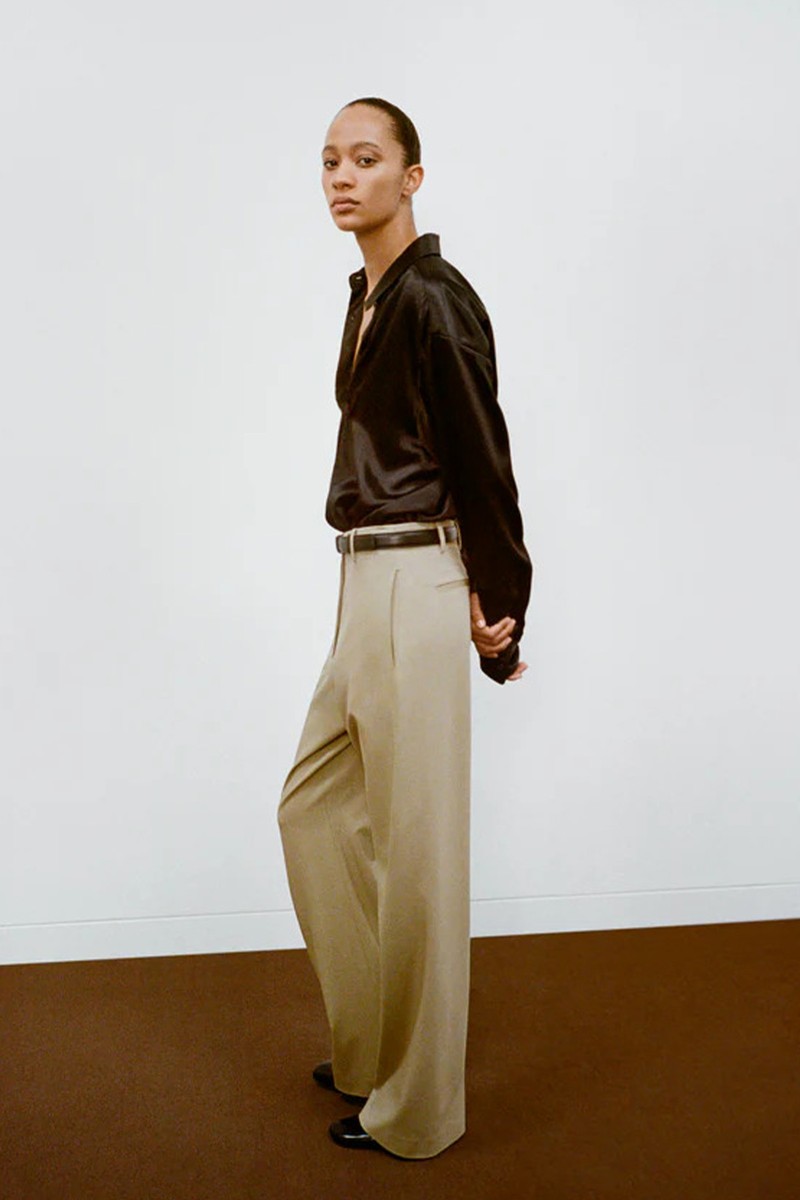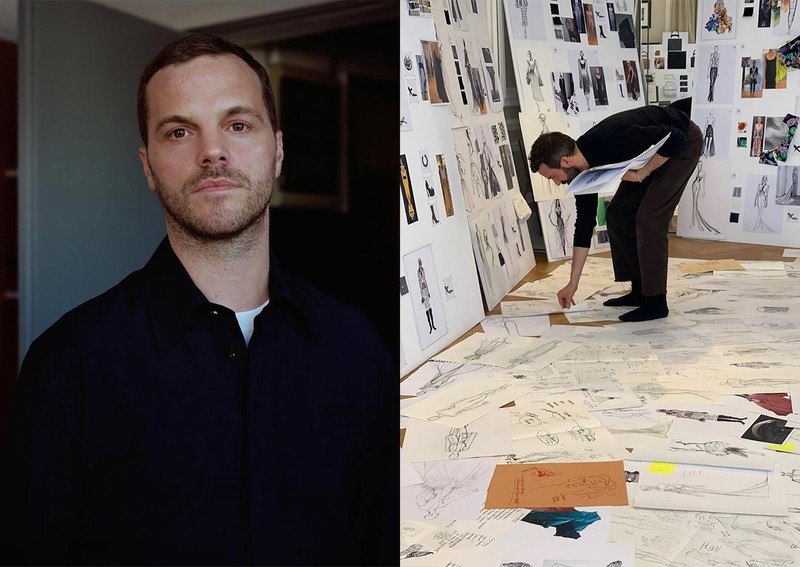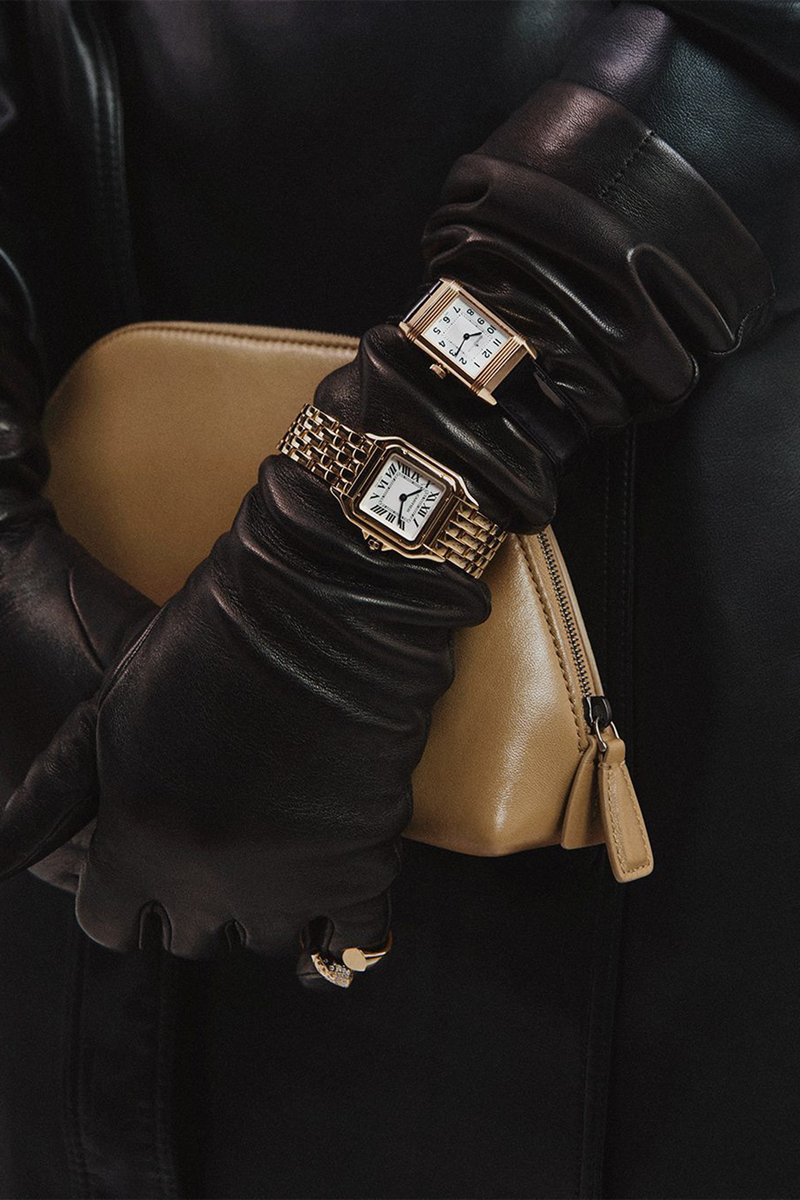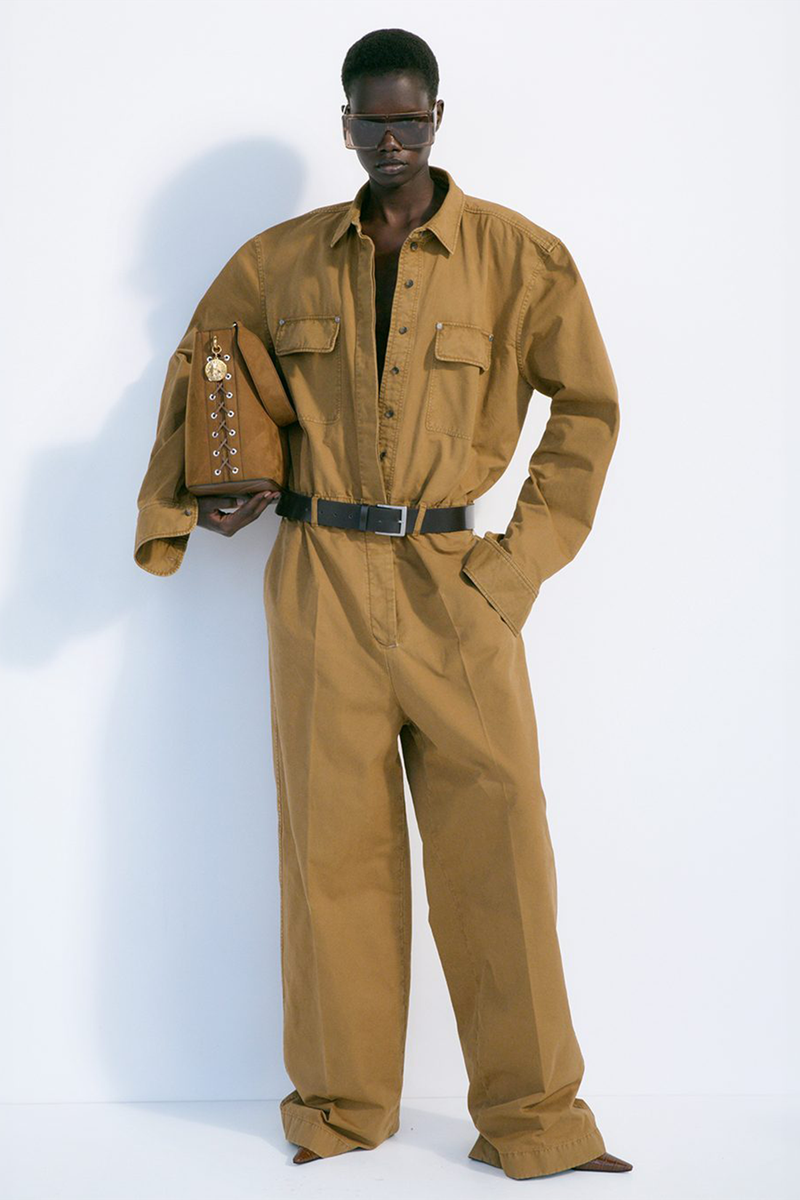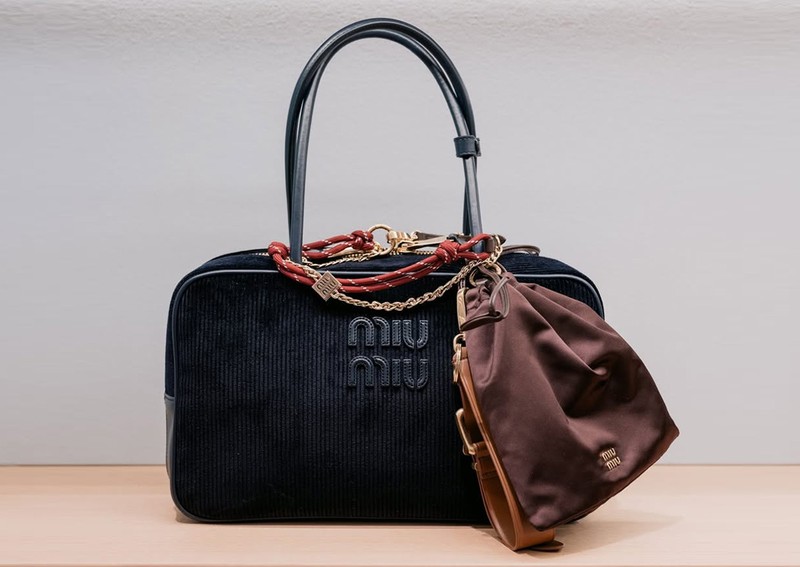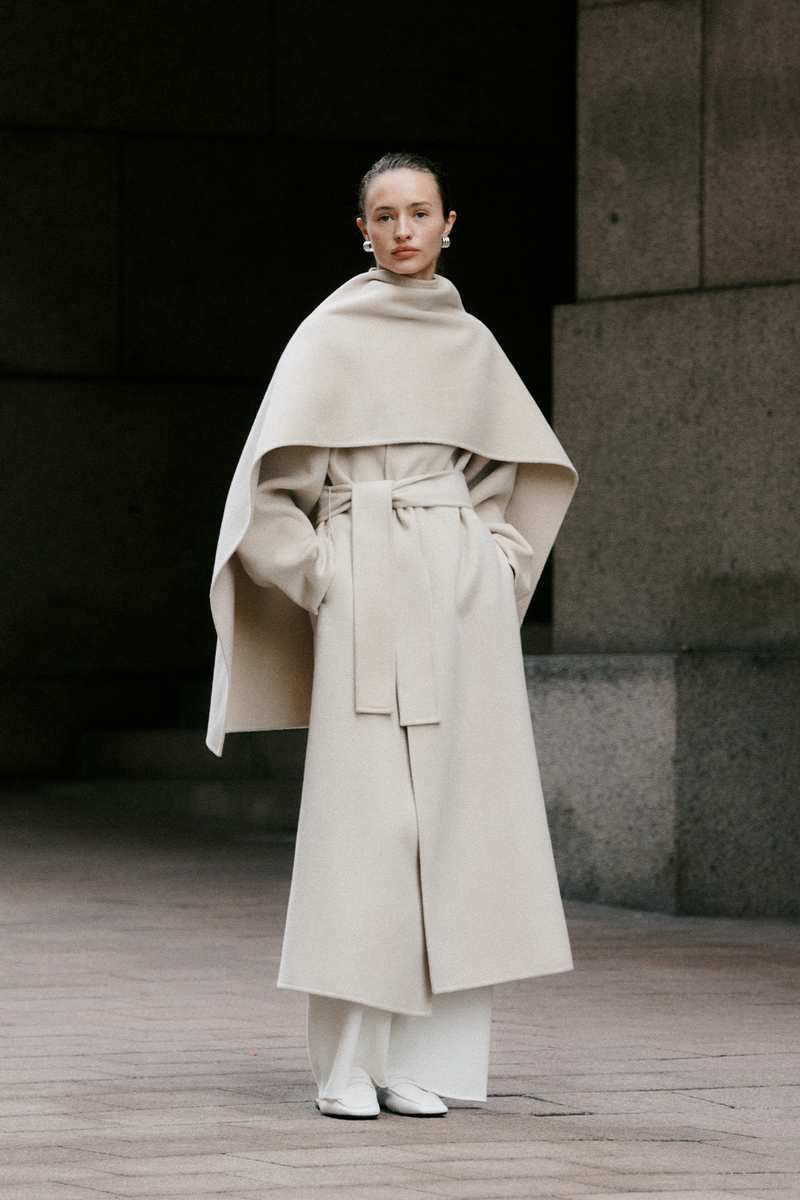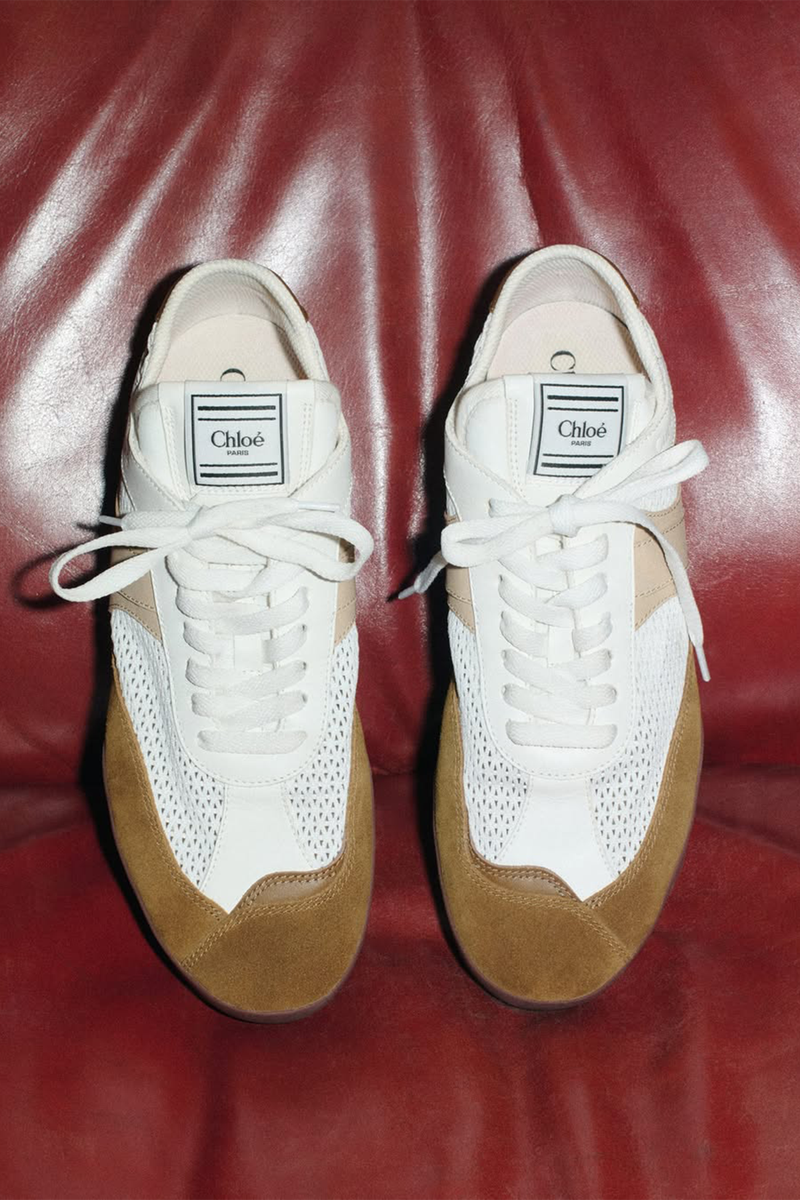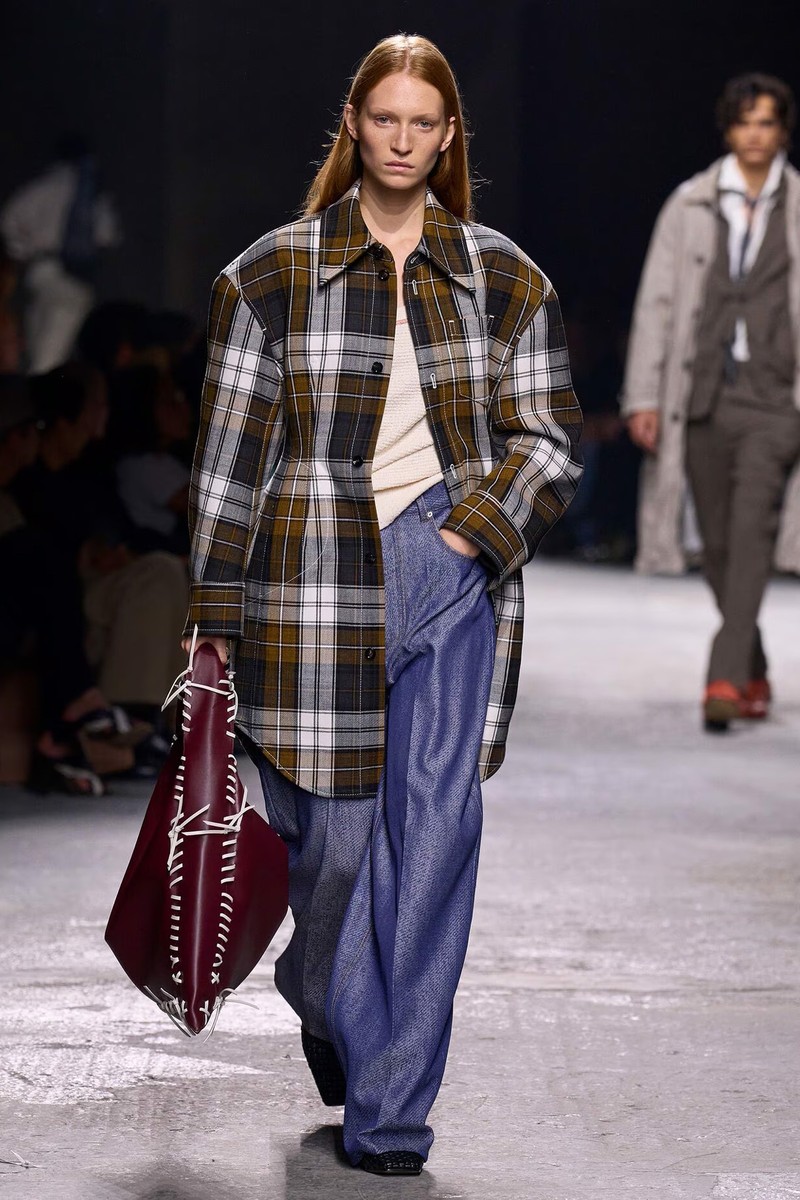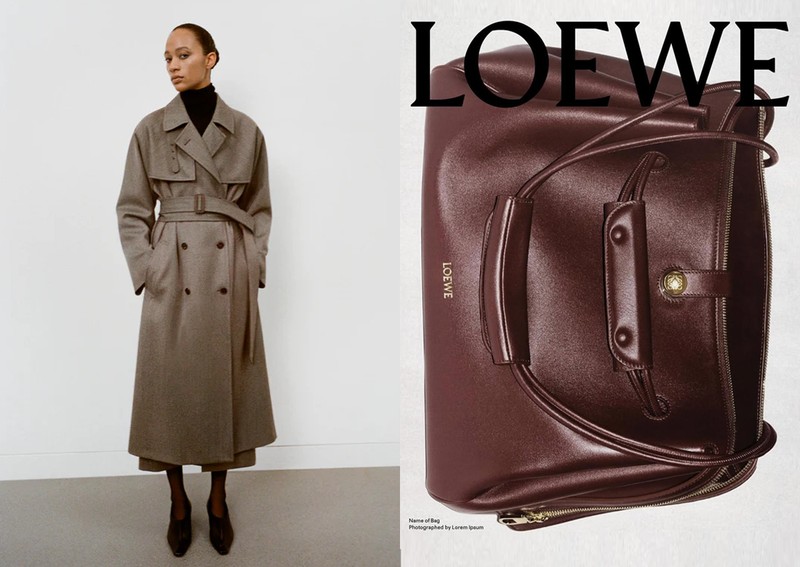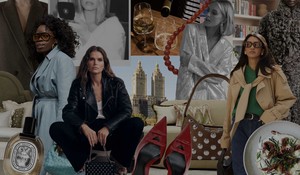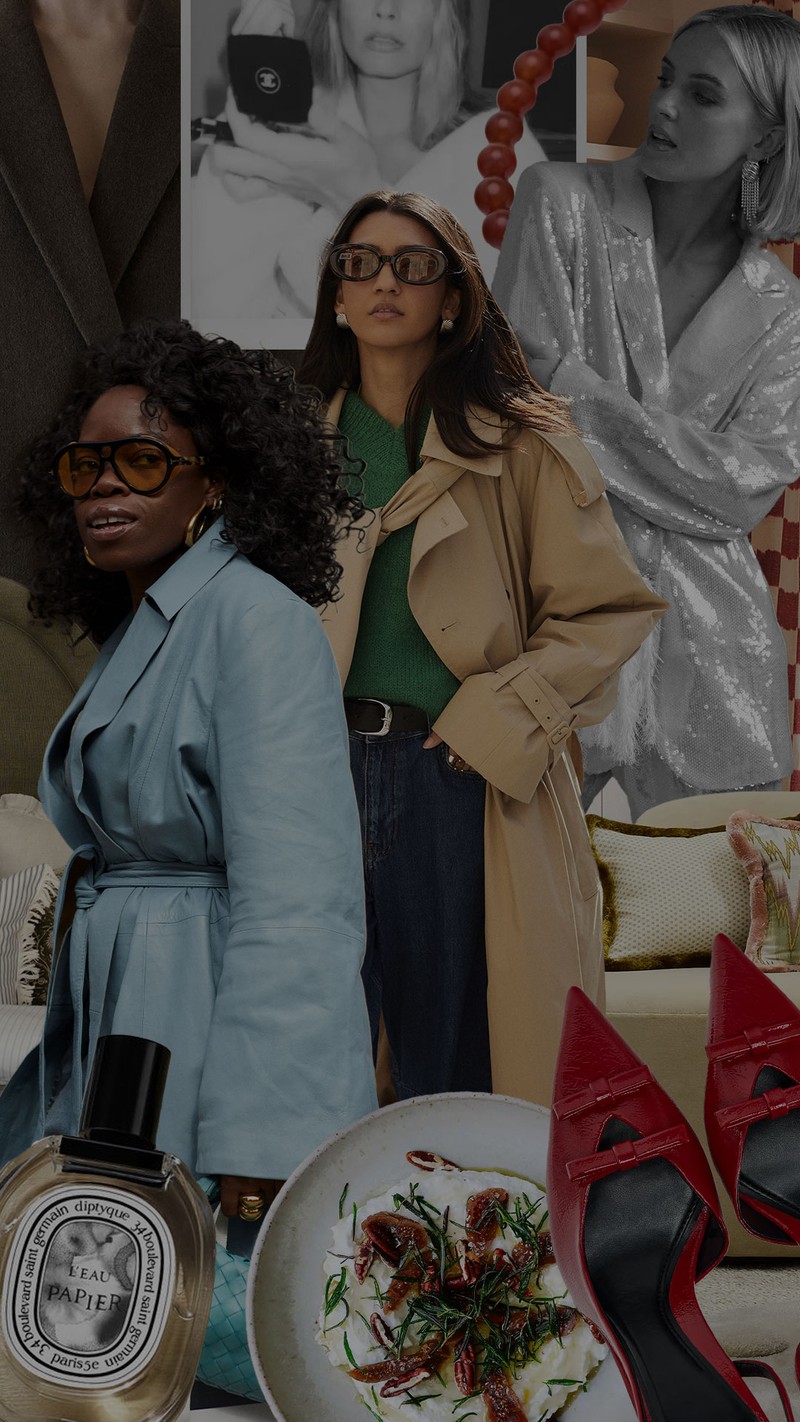
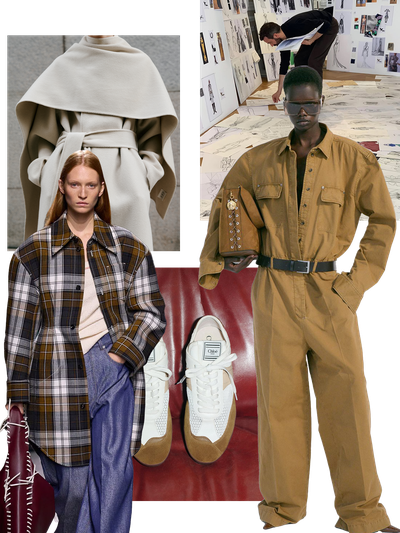
What’s Next For The Fashion Industry
All products on this page have been selected by our editorial team, however we may make commission on some products.
The Creative Shift
The luxury sector of the fashion industry is arguably responsible for what happens further down the food chain and as 2025 begins, several high-profile appointments continue to generate conversation. In 2024, Loewe, The Row and Schiaparelli all dominated – thanks to visionary leaders Jonathan Anderson, the Olsen twins and Daniel Roseberry, who turned their creative genius into commercial gold. Honourable mentions also need to go to Maximilian Davis for reviving the fortunes of Ferragamo with the viral ‘Hug’ bag and Pieter Mulier whose 2021 appointment at Alaïa has proved to be a masterstroke. Its Le Teckel bag was a fashion-girl favourite last year.
This year, it’s all change. Well, not quite – Ashley and Mary-Kate Olsen remain in control at The Row despite handing over a significant chunk of their business to investors last year (including Chanel owners the Wertheimer brothers). Similarly, there seems to be no switch for Daniel Roseberry, whose artful reimagining of Schiaparelli has been a hit. However, Bottega’s Matthieu Blazy has announced his move to Chanel, John Galliano has left his post at Maison Margiela and the rumour is Jonathan Anderson will replace Maria Grazia Chiuri at Dior, with Proenza Schuler’s Jack McCollough and Lazaro Hernandez taking up the reins at Loewe.
The Death Of Quiet Luxury?
This year, all eyes will be on Anderson and Blazy in their new roles – especially as both are renowned for prioritising craftsmanship and quality, a lack of which has led to criticism of luxury fashion more generally in recent years. Both are also masters of novelty, although that isn’t something that appears to have been high on the fashion agenda of late. Instead, ‘quiet luxury’ – defined as muted colours, impeccable cuts, timeless shapes and seriously high prices – has dominated. While it’s given brands like The Row its edge (estimated annual sales sit somewhere between $100m-$300m and its valuation around $1bn) industry experts believe consumers are craving change.
Cassie Thorpe, whose YouTube videos analysing the goings-on across luxury fashion have earned her more than 160,000 subscribers, explains: “Quiet luxury has always existed – it’s really just wearing classic, logo-less pieces – but the problem is now we can’t escape it and people are yearning for a bit more excitement.” In her view, it’s why things like bag charms took off towards the end of 2024. “It’s about adding a bit of fun into your look, isn’t it? Plus, they’re not a huge commitment and you can change them up when the mood strikes.”
Fun – Cassie argues – is something Anderson and Blazy can bring to Paris’s biggest fashion houses. “Certainly, with Blazy, there’s lots of potential,” she says. “He’s good at craftsmanship and quality, and also has this cheekiness to him, which feels reminiscent of the Karl Lagerfeld years. Jonathan Anderson has also mastered this balance so well – when you go into a Loewe store, you can be the fun ‘fashion girl’ or stick to those easy-to-wear pieces. It caters to everyone but still feels so quintessential.”
Does she think the upward curve for brands like The Row will taper off? “The beauty of The Row is its consistency – it’s never not been what it is now,” says Cassie. “It’s been around a lot longer than people realise, about 2006, and it’s always been the same: classic cuts, quality fabrics, perfect drapes. That’s why The Row customer is so loyal; they go back and get exactly what they expect. Even if ‘quiet luxury’ as a trend falls away, The Row won’t change, and nor will its customers.”
Neelam Ahooja, an online content creator and strong advocate for The Row, agrees. “The Row customers purchase with intention and have always appreciated brands like Hermès and Loro Piana for their superior craftsmanship. The Row might be the new kid on this particular block but that’s what gives it its edge. There will always be a core group of fashion people who gravitate towards minimalism, but I'd never claim that it's here permanently. Trends recycle and boredom is the mother of creativity in the fashion world.”
This year, The Row also faces a new future after its fresh cash injection but for Neelam it’s not something its die-hards should fear: “It looks like the brand is on its way to becoming a proper house and with these specific investors, I'm hoping it means a beauty line and couture.”
The Sustainability Challenge
The brilliance of ‘quiet luxury’ lies in its alignment with the all-important sustainability conversation that continues to challenge one of the world’s most wasteful industries. The philosophy of ‘buy less, buy better’ is intrinsic to the trend, and brands like The Row have capitalised on consumers’ growing environmental awareness to drive success.
For more ordinary brands, however, the challenge lies in scaling sustainable practices without compromising profitability – key hurdles include sourcing eco-friendly materials, creating efficient recycling systems and addressing overproduction. Consumers in 2025 also demand more transparency and accountability. Companies like Stella McCartney and Patagonia have long been leaders in this space, but newer entrants – like rental platforms and resale sites – prove there’s now a broader adoption of sustainable models. Platforms like Vestiaire Collective, The RealReal and 1stDibs continue to grow (interestingly, the latter reported a 76% year-over-year increase in orders for Blazy’s Bottega Veneta bags in 2024) with traditional retailers also integrating more second-hand offerings. Even luxury brands that once resisted the resale market are now embracing it to capture younger, eco-conscious consumers.
“The sustainability conversation is the reason you’re seeing lots of brands taking pre-loved into their own hands,” explains Cassie. “Even luxury icons like Oscar de la Renta now have an area of the site where you can sell pre-loved pieces back – they then recondition and authenticate it.”
Lauren Stevenson, co-founder and director of PR company Aisle 8, whose client list includes rental platform HURR, argues the success of rental businesses proves how much the sustainability movement has changed customer’s appetite for consumption. “The savvy brands are now embracing rental and pre-loved to boost sales,” she explains. “There are more than 130 brands that use HURR to essentially white label their rental operation – they know they can't ignore the power of that market.”
The discussion around excess is also why brands can’t get away with mismatching price and quality anymore, adds Cassie. “If everything had stayed a bit more constant in terms of the recent price rises and truly reflected the quality of the product, then luxury fashion wouldn't be experiencing the downturn it is. It’s the reason we’re seeing so many dupes.” Neelam concurs: “There are some customers who will always remain price insensitive, but plenty are fed up with the inaccessibility. It explains why the response to the dupe market has been so intense.”
The Future Of Retail
This resistance to the rapid inflation in luxury prices could explain why the fast fashion market continues to thrive – even in this modern era of ‘conscious consumption’. In 2023, online mega-site Shein's estimated sales landed between $32.2–$32.5 billion, a 41-43% increase on 2022. In the UK alone, Shein's sales were £1.55 billion, a 38% increase from 2022. Lauren adds: “It’s interesting because people are quick to call time on fast fashion but there’s a reason Shein, Temu and AliExpress are all thriving – a lot of that comes down to wanting fashionable pieces that don’t cost the earth. Even what was once considered the ‘entry level’ designer pieces, like the shoes, those now cost close to £1,000, so it’s understandable that people are seeking out an alternative.”
In addition, it isn’t enough to think of consumers as luxury or fast-fashion, online or offline anymore. “Customers have really changed their behaviour, so retailers can’t see them in binary terms anymore,” Lauren explains. “There’s a customer who will buy full-price mainline items from a luxury brand, a ‘mastige’ customer who wants to buy into it through more affordable accessories, and then customers who will only shop pre-loved or rent the pieces. If retailers aren’t providing a space – either online, offline or both – that captures all those different customers, then success won’t come.”
What that points to is the success of multi-brand retailers like Selfridges, which – according to Retail Week – saw sales dip just 1% to £834.9m in the year ended 3rd February 2024. That’s not bad in a retail environment plagued by unpredictable consumer demand and continued cost pressures. Nor is it bad compared to other high-profile collapses – like the sudden loss of designer fashion platform MATCHESFASHION.com in June 2024.
Social Shopping
The future for retail now lies in social media and continued digitisation. In 2025, the metaverse is no longer a speculative buzzword but a commercial reality. Virtual fashion shows and digital garments, pioneered by brands like Gucci, have become commonplace. Despite the platform’s recent – yet fleeting – US ban, the rise of TikTok Shop has had an undeniable effect on the way brands tap into their markets. Going forward, finding the balance between physical and digital touchpoints remains complex. Consumers expect personalised experiences across all channels, while AI-driven styling assistants, augmented reality fitting rooms and immersive storytelling platforms offer new avenues for engagement.
“Algorithms and data have empowered brands to offer their customers tailored and highly relevant product recommendations,” says Maryam Ghahremani, CEO of Bambuser, a video commerce company used by 250 global retail players including Zara, Victoria Beckham and LVMH-owned brands. “Simultaneously, social media influencers have built trust and driven engagement, giving shoppers the confidence to make purchases directly through platforms like Instagram and TikTok. Advancements in technology are enabling consumers to explore and interact with products through live and shoppable videos – finally bridging the gap between the physical and digital shopping experience.”
So, what does that mean for retail in 2025? “Live shopping is poised for a major breakthrough,” posits Maryam. “The success of live shopping in China has demonstrated its potential, with over half (54.7%) of Chinese consumers now shopping through livestreams. I believe we'll see a significant increase in high-end brands experimenting with live shopping over the next year. We've already seen Victoria Beckham and other high-end brands such as Dior and Fendi use these platforms to launch new collections and engage their customers.”
The assumption, then, is that in-person retail is facing a continued decline – but Maryam rejects that notion as too black and white. “In-person retail still holds an important place, but the difference is we'll see brands becoming more innovative in how they leverage their physical stores. One trend we’re seeing is the emerging use of in-store staff to enhance the online shopping experience – they’re turning them into omnichannel retail consultants who can engage online shoppers directly from the store. This offers online customers a more personalised experience – and they still remain crucial for building and sustaining brand loyalty."
Encouraging Customer Loyalty
Loyalty seems to be a big part of the puzzle that fashion brands have to crack. As Lauren says, we’ve reached ‘critical mass’ in terms of stuff – so it’s unlikely anyone ‘needs’ anything from these brands. So, the question is, how do they keep people coming back?
One model that continues to thrive is direct-to-consumer (DTC). In bypassing traditional wholesalers, brands can foster closer relationships with customers while maintaining greater control over branding and pricing. Social commerce, live-streaming sales and community-driven platforms all offer lucrative pathways for growth. In the past, brands like Glossier and Allbirds built loyal followings through authentic storytelling and transparent business practices and in 2025, newer entrants are pushing boundaries by creating membership-based fashion ecosystems where customers influence product design and receive exclusive benefits. “As customers, we're not loyal,” says Cassie. “There’s too much chop and change. So, brands need to find a way to reward loyalty – and that often manifests as exclusive drops, one-off experiences for important clients and other benefits customers can unlock as they continue to spend.”
Lauren agrees: “It’s not enough that online retailers make the luxury buying process easy anymore. That might have been revolutionary 15 years ago, but there’s a reason so many of them are selling on constant discount now. It demonstrates this desire for experience. Customers are thinking about things so thoroughly and they want more than just a box landing on the doorstep. If they’re spending a lot, and regularly, they also want to be rewarded. The successful retailers will find a way to do this.”
“It’s definitely becoming less about influencers and traditional marketing,” Nabila Virani-Neriman, founder and director of communications and brand development agency Le-Grey says. “VIP strategy is suddenly counting a lot more for brands, so yes, customer and community is something they need to prioritise.”
The Thriving ‘Middle’
Interestingly, while the top end of the industry is busy installing new creative chiefs in a bid to revive sales, the middle market is thriving. “What these brands – like Rixo and Sézane – have nailed is strategy and perception. You can see it in the styling, the influencers they work with and the imagery they use on Instagram,” says Lauren. “A brand like Odd Muse has done this so well – the product looks expensive but it’s still affordable for a younger customer.”
Indeed, French fashion brand Sézane has seen average growth of 20-30% since its creation in 2013, while Rixo's sales increased by 9% to £19m for the year ending 2nd July 2023 (Fashion United). “The product also speaks to a ‘quiet luxury’ customer,” adds Lauren. “Not necessarily in terms of aesthetic but in the idea that this is a quality product, with a slightly higher price point that reflects ethical and sustainable practices, and it’s been designed to last – all of that is very appealing for modern consumers. Look at brands like Vuori – it’s doing so well because it speaks to men in a comfortable and aspirational way that's not performance-led like Nike or adidas. People might look at these brands and think they feel ‘basic’ – but that’s their beauty. They’re still speaking to that would-be quiet luxury customer except it actually feels attainable.”
One brand that seems to have tapped into this magic is Almada Label, known for its luxe knitwear, silk trousers and elevated basics. A cashmere sweater will set you back £380 but that pales in comparison to the £1,440 price tag for The Row’s cult ‘Ophelia’ sweater. Almada founders Alexa Dagmar and Linda Juhola have their own thoughts on why the brand continues to go from strength to strength: “What makes Almada special is our commitment to delivering high-end products and a premium brand experience, while maintaining that approachable and attainable ethos,” the two explain. “Whether it’s our price-to-quality ratio or the way we engage and connect with our community, every detail reflects our dedication to making luxury more accessible.”
Accessibility is a key word – it’s clear modern fashion customers want to feel like they’re tapping into a luxury world but not being exploited on price or quality. “Our focus is exactly that: delivering the highest possible quality while keeping the price accessible. This balance is what resonates with our customers – it’s why we never offer sales or discounts,” add Linda and Alexa.
Finally, cool factor. If there’s one thing a brand needs to ‘make it’, it’s being legitimised by those in the know – and thus, their followers. “The everyday woman who doesn’t work in fashion – maybe she works in an office, has kids, a home life – she needs to have the cool factor communicated to her,” argues Nabila. In 2025, this means choosing the right faces to front the brand and compelling storytelling. You also can’t take your eye off the quality of the product. “The bottom line is you have to be delivering something no one else can,” adds Nabila. “And if you’re a small brand like Almada or Yaitte, then having a smaller marketing budget can actually be an asset. It means when you’re choosing influencers to work with, or which activations to pursue, they have to be that much more considered. Choose right, and those women or events can help you legitimise the brand in the eyes of customers.”
So, Where Next?
It appears fashion brands need to keep their eyes on three things in 2025: quality, price and customers – an age-old combination when you think about it. “Covid led to this overconsumption realisation,” argues Nabila. “We suddenly had no need for all the clothes in our wardrobes, so we decluttered and what goes? All the trend-led stuff, which is what gave rise to minimalism and all these ‘quiet luxury’ brands. When people’s lives became quieter during the pandemic, they were able to really see the waste. Now, when a brand pops up with a quiet, palate-cleansing offering, customers feel drawn to it. It really is some kind of soft power – soft luxury if you will.” Maybe ‘soft luxury’ will displace the quiet luxury concept this year but to get it right, brands need to prioritise quality craftsmanship, accessible pricing and a customer-first approach. The pieces need to timeless, elevated and balance affordability with thoughtful innovation. And as the shift toward sustainable, high-quality and emotionally resonant fashion continues, it’s likely only a handful of brands will be responsible for reshaping the market landscape.
DISCLAIMER: We endeavour to always credit the correct original source of every image we use. If you think a credit may be incorrect, please contact us at info@sheerluxe.com.
